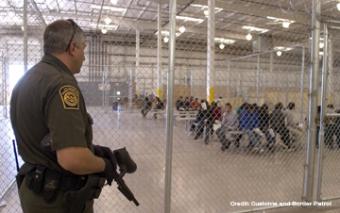Deportations/Returns
Recent Activity
Recent Activity
The White House immigration plan offered as a solution to resolve the fate of DREAMers seeks legal immigration cuts unlike any seen since 1924. In addition to a decrease of up to 40 percent in family-sponsored immigration, the proposal demands vast increases in enforcement and a retrenchment in protections for those seeking humanitarian relief. In exchange, one-sixth of the unauthorized population could gain legal status.
On the campaign trail, Donald Trump made immigration the centerpiece of his campaign, offering a more detailed policy agenda than on any other issue. In the year since the election that propelled the Republican into the White House, how has the Trump administration’s record matched up with the rhetoric? This policy brief examines the executive orders and other changes to existing policy and practice made during 2017.















The Trump Immigration Plan: A Lopsided Proposal